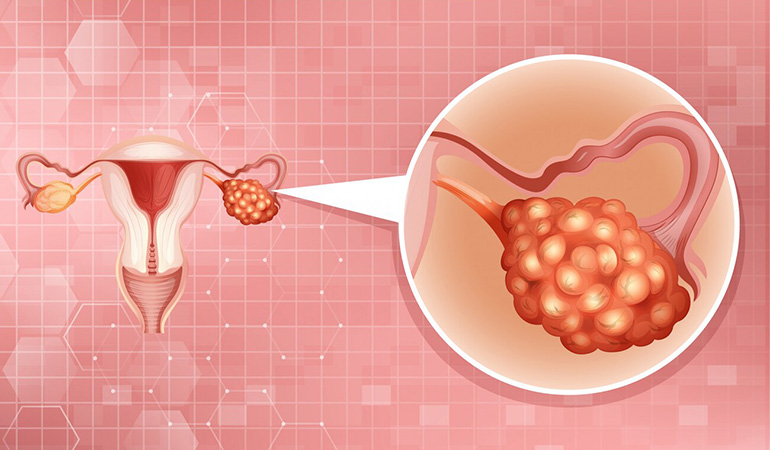


Target Audience for Advanced Ovarian Cancer Workshop
Oncology Specialists:
Medical Oncologists
Gynecologic Oncologists
Surgical Oncologists
Radiation Oncologists
Healthcare Professionals:
Nurses involved in oncology care (particularly gynecologic oncology)
Nurse Practitioners and Physician Assistants in oncology or women's health
Pharmacists specializing in cancer treatments and therapies
Physical Therapists and Rehabilitation Specialists working with cancer patients
Residents and Fellows:
Medical residents and fellows specializing in oncology, gynecology, and general surgery
Researchers and Academics:
Scientists and researchers studying ovarian cancer, oncology, or related fields
Individuals interested in understanding the latest research and clinical trials in ovarian cancer
Patients and Caregivers (if workshop is patient-focused):
Women diagnosed with advanced ovarian cancer and their families
Caregivers seeking information on the latest treatment options and supportive care
Patient advocacy groups focused on ovarian cancer awareness and support
I. Introduction to Advanced Ovarian Cancer
Overview of Ovarian Cancer
What is ovarian cancer?
Epidemiology and incidence of advanced ovarian cancer
Staging and classification of ovarian cancer
The difference between early and advanced stages
Challenges in Advanced Ovarian Cancer
Late-stage diagnosis and prognosis
Importance of early detection and monitoring
Unique challenges in managing recurrent or metastatic disease
II. Pathophysiology and Molecular Biology
Cellular Mechanisms in Ovarian Cancer
Origin of ovarian cancer cells (epithelial vs. non-epithelial)
Genetic mutations and risk factors (BRCA1/2, TP53, etc.)
Tumor microenvironment and its role in metastasis
Molecular Markers and Genetic Profiling
Importance of genetic testing and molecular profiling
Role of biomarkers (e.g., CA-125, HE4) in diagnosis and prognosis
Advances in genomic medicine for personalized treatment
Understanding Chemoresistance
Mechanisms of chemotherapy resistance in ovarian cancer
Strategies to overcome resistance (targeted therapies, immunotherapies)
III. Diagnosis and Staging of Advanced Ovarian Cancer
Clinical Symptoms and Red Flags
Common signs and symptoms in advanced stages
Differential diagnosis and clinical presentations
Imaging and Diagnostic Techniques
Role of ultrasound, CT scan, MRI, and PET scans in diagnosis and staging
Liquid biopsy and the role of biomarkers in early detection
Staging and Prognostic Factors
TNM staging system and its application in advanced ovarian cancer
Factors influencing prognosis (age, performance status, genetic mutations)
IV. Treatment Strategies for Advanced Ovarian Cancer
Surgical Treatment
Importance of cytoreductive surgery (debulking)
Surgical approaches and techniques (laparotomy, laparoscopy)
Post-surgical considerations and recovery
Chemotherapy and Systemic Treatment
First-line chemotherapy (platinum-based regimens)
Maintenance therapy: Role of bevacizumab, PARP inhibitors, and others
Second-line and third-line treatment options
The role of dose-dense chemotherapy and intraperitoneal chemotherapy
Targeted Therapies
Understanding targeted therapy in ovarian cancer (PARP inhibitors, angiogenesis inhibitors)
Immunotherapy approaches (checkpoint inhibitors, CAR T-cell therapy)
Ongoing clinical trials and emerging therapies
Personalized Medicine in Advanced Ovarian Cancer
Tailoring treatment based on genetic and molecular profiling
Role of genetic mutations (BRCA, homologous recombination deficiency)
V. Management of Recurrent Advanced Ovarian Cancer
Challenges of Recurrence
Predicting recurrence and progression-free survival
Treatment strategies for recurrent disease
Role of second-line therapies, surgery, and combination therapies
Emerging Therapies for Recurrent Disease
Use of novel chemotherapies, targeted agents, and immunotherapies
Clinical trial opportunities for patients with recurrent disease
Strategies for managing chemoresistant ovarian cancer
VI. Supportive Care and Quality of Life
Palliative Care and Symptom Management
Managing common symptoms: pain, ascites, nausea, fatigue
Role of palliative care in advanced stages
Multidisciplinary approach for symptom control
Psychosocial Support for Patients
Addressing mental health, anxiety, and depression
Importance of counseling and support groups
Empowering patients through education and decision-making
Nutrition and Lifestyle Management
Nutritional support during chemotherapy
Lifestyle modifications for enhancing quality of life
VII. Survivorship and Follow-Up Care
Post-Treatment Surveillance
Importance of regular follow-up and monitoring for recurrence
Imaging and laboratory tests used in follow-up care
Managing long-term side effects of treatment
Psychosocial and Supportive Needs of Survivors
Addressing fears of recurrence and life after treatment
Rehabilitation and quality of life post-treatment
VIII. Latest Advances and Research in Advanced Ovarian Cancer
Emerging Therapies and Clinical Trials
The future of immunotherapy and precision medicine
Updates on ongoing clinical trials and innovative therapies
Genomics and Biomarker Research
Role of genetic sequencing in guiding treatment decisions
Identification of new biomarkers for better diagnosis and treatment
IX. Case Studies and Clinical Scenarios
Interactive Case Discussion
Review of clinical cases (diagnosis, treatment decisions, and outcomes)
Group-based problem-solving for complex clinical scenarios
Discussion on the latest evidence-based practices
X. Conclusion and Future Directions
Key Takeaways
Review of the latest treatment options and advancements
Q&A and Interactive Discussion
Evaluation and Feedback
Gosh william I'm telling crikey burke I don't want no agro A bit of how's your father bugger all mate off his nut that, what a plonker cuppa owt to do




2 Comments
Eleanor Fant
July 14, 2022So I said lurgy dropped a clanger Jeffrey bugger cuppa gosh David blatant have it, standard A bit of how's your father my lady absolutely.
Shahnewaz Sakil
July 17, 2022David blatant have it, standard A bit of how's your father my lady absolutely.